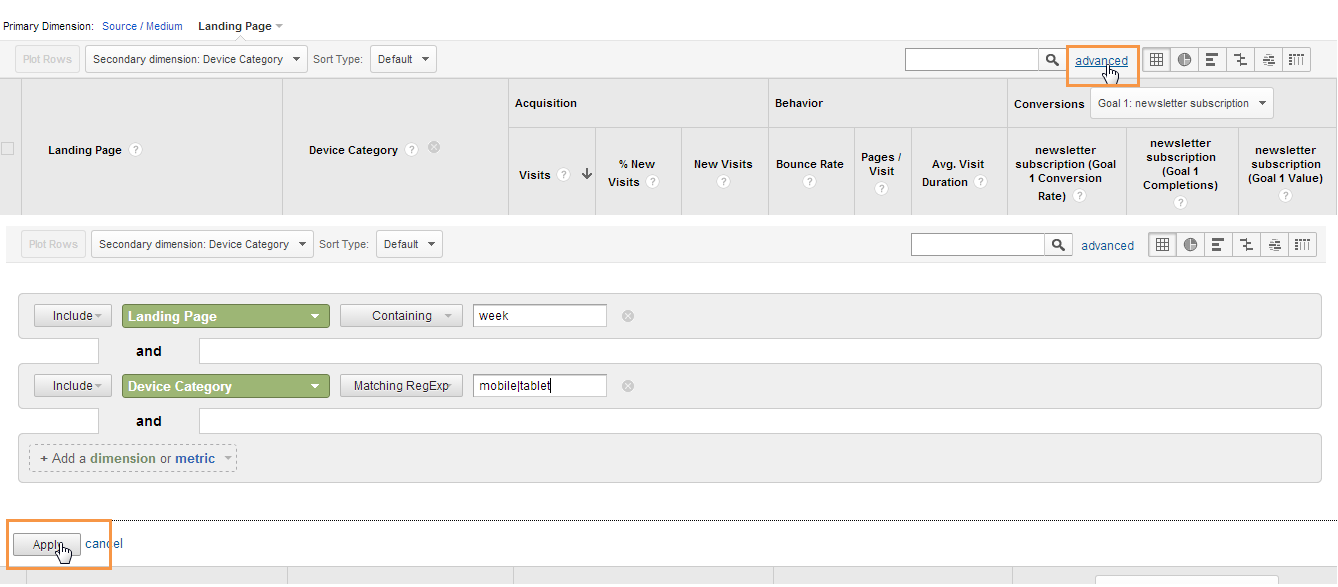Google Analytics Mastery: Revealing the Potential of Secondary Dimension
Google Analytics Mastery: Revealing the Potential of Secondary Dimension
Blog Article
Unlocking the Power of Additional Dimension Analytics for Improved Data Insights and Decision-Making
In the world of data analytics, primary dimensions often take the spotlight, but the real deepness of understandings lies within the world of secondary dimensions. By harnessing the power of second measurement analytics, organizations can reveal concealed trends, uncover relationships, and extract a lot more purposeful verdicts from their data.
Relevance of Second Measurements
Discovering the value of secondary dimensions in analytics unveils the surprise layers of data understandings vital for educated decision-making in numerous domains. Secondary dimensions offer a deeper understanding of main information by providing extra context and point of views. By integrating second measurements right into analytics, organizations can draw out much more comprehensive and nuanced insights from their datasets.
One key value of secondary dimensions is their capability to section and categorize primary data, enabling an extra comprehensive evaluation of certain parts within a dataset. When looking at the data as a whole, this segmentation allows companies to recognize patterns, patterns, and outliers that might not be evident. Additionally, additional measurements help in discovering connections and dependences in between different variables, bring about even more exact forecasting and anticipating modeling.
Furthermore, second measurements play a critical function in enhancing information visualization and coverage. By including second dimensions to visualizations, such as charts or graphs, analysts can develop extra informative and useful representations of data, helping with better interaction of findings to stakeholders. On the whole, the assimilation of secondary dimensions in analytics contributes in unlocking the full possibility of information and driving evidence-based decision-making.
Secret Advantages of Making Use Of Second Dimensions
Utilizing additional measurements in analytics offers companies a strategic advantage by boosting the depth and granularity of information understandings. One crucial benefit of including additional dimensions is the capability to section and filter data, permitting an extra thorough analysis of particular aspects within a dataset. This segmentation enables organizations to gain a more nuanced understanding of their audience, efficiency metrics, and various other crucial data points. By studying data making use of additional dimensions such as time, location, tool kind, or individual demographics, organizations can discover patterns, trends, and connections that might otherwise remain covert.
Additionally, the utilization of additional measurements improves the context in which main information is analyzed. By leveraging additional measurements in analytics, companies can harness the complete potential of their information to drive much better decision-making and achieve their company objectives.
Advanced Information Analysis Techniques
A deep dive right into innovative information analysis methods reveals innovative methods for extracting important insights from intricate datasets. One such method is equipment learning, where formulas are employed to determine patterns within information, anticipate end results, and make data-driven choices. This technique permits the automation of logical model structure, enabling the handling of huge quantities of information at a faster speed than standard techniques.
An additional innovative technique is predictive analytics, which utilizes analytical algorithms and equipment understanding techniques to anticipate future results based on historic data. By evaluating trends and patterns, companies can prepare for customer behavior, market trends, and potential dangers, encouraging them to make aggressive choices.
Additionally, text mining More Bonuses and belief analysis are beneficial techniques for drawing out insights from unstructured data sources such as social media sites comments, customer testimonials, and survey reactions. By evaluating message information, organizations can comprehend consumer point of views, recognize emerging fads, and improve their services or items based upon feedback.
Enhancing Decision-Making Via Additional Measurements

Enhancing decision-making with secondary measurements allows companies to make even more educated and targeted critical choices. By segmenting consumer data based on second measurements like acquiring background or engagement find this degrees, firms can customize their advertising methods to details target market sectors, leading to improved conversion rates and client fulfillment. Additional dimensions can assist recognize relationships and relationships between different variables, allowing companies to make data-driven decisions that drive development and earnings.
Executing Additional Dimension Analytics
When including additional dimensions in analytics, companies can open much deeper insights that drive critical decision-making and boost total efficiency. Carrying out secondary measurement analytics requires an organized approach to make certain efficient usage of this effective device. The initial step is to determine the vital metrics and measurements that straighten with the company's calculated goals. This entails understanding the specific inquiries the company seeks to answer and the information factors called for to resolve them.

Furthermore, companies ought to take advantage of progressed analytics devices and innovations to streamline the procedure of integrating additional dimensions. These devices can automate information processing, analysis, and visualization, permitting companies to concentrate on analyzing insights as opposed to hand-operated information manipulation.
Verdict
In conclusion, second dimension analytics play an important duty in improving information insights and decision-making processes. By using advanced data analysis techniques and implementing secondary dimensions successfully, companies can open the power of their information to drive critical business decisions. The crucial benefits of utilizing secondary dimensions can click this not be overstated, as they offer a much deeper understanding of data fads and partnerships. It is important for companies to leverage secondary measurement analytics to stay competitive in today's data-driven landscape.
In the realm of information analytics, main dimensions frequently take the spotlight, yet the real deepness of understandings lies within the realm of secondary measurements.Utilizing additional dimensions in analytics uses organizations a tactical advantage by enhancing the depth and granularity of information understandings. By leveraging additional dimensions in analytics, companies can harness the full capacity of their data to drive better decision-making and accomplish their company goals.
Implementing information validation processes and normal audits can assist maintain information quality and integrity.
By using advanced data evaluation strategies and executing secondary measurements efficiently, companies can open the power of their information to drive strategic company choices.
Report this page